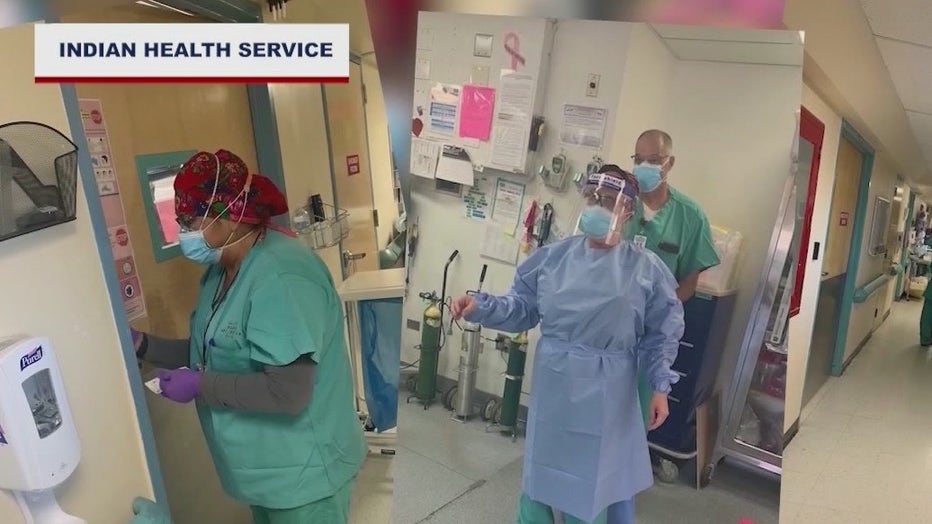Navajo Nation: No COVID-related deaths for 14th time in 20 days

Navajo Nation COVID-19 vaccine mandate comes with hopes of not becoming a hot spot once again
All Navajo Nation executive branch employees must be vaccinated, President Jonathan Nez announced, hoping to help prevent the nation from becoming a hot spot again.
WINDOW ROCK, Ariz. - The Navajo Nation on Tuesday reported 85 more COVID-19 cases, but no additional deaths for the 14th time in the past 20 days.
The latest numbers pushed the tribe’s totals to 34,999 confirmed COVID-19 cases from the virus since the pandemic began more than a year ago.
The known death toll remains at 1,464.
Tribal officials still are urging people to get vaccinated, wear masks while in public and minimize their travel.

Staff in a Navajo Nation hospital
Based on cases from Oct. 1-14, the Navajo Department of Health issued an advisory for 31 communities due to the uncontrolled spread of the coronavirus.
All Navajo Nation executive branch employees had to be fully vaccinated against the virus by the end of September or submit to regular testing.
The tribe’s reservation is the country’s largest at 27,000 square miles (70,000 square kilometers) and it covers parts of Arizona, New Mexico and Utah.
MORE: Coronavirus in Arizona: Latest case numbers
In order to protect yourself from a possible infection, the CDC recommends:
- Avoid close contact with people who are sick.
- Avoid touching your eyes, nose, and mouth.
- Stay home when you are sick.
- Cover your cough or sneeze with a tissue, then throw the tissue in the trash.
- Clean and disinfect frequently touched objects and surfaces using a regular household cleaning spray or wipe.
- Cover your mouth and nose with a cloth face cover when around others
- Wash your hands often with soap and water for at least 20 seconds, especially after going to the bathroom; before eating; and after blowing your nose, coughing, or sneezing.
- Monitor your health daily
More Navajo Nation COVID-19 news
- Navajo Nation reports no COVID-19 deaths for 3rd day in row
- Bureau of Indian Education issues vaccine mandate
- Navajo Nation mandates COVID-19 vaccine for government workers
Symptoms for coronavirus COVID-19 include fever, coughing, and shortness of breath. These, of course, are similar to the common cold and flu.
Expect a common cold to start out with a sore or scratchy throat, cough, runny and/or stuffy nose. Flu symptoms are more intense and usually come on suddenly, and can include a high fever.
Symptoms of COVID-19 may appear more slowly. They usually include fever, a dry cough and noticeable shortness of breath, according to the World Health Organization. A minority of cases develop pneumonia, and the disease is especially worrisome for the elderly and those with other medical problems such as high blood pressure, obesity, diabetes or heart conditions.
RELATED: Is it the flu, a cold or COVID-19? Different viruses present similar symptoms
To protect yourself, wash your hands well and often, keep them away from your face, and avoid crowds and standing close to people.
And if you do find yourself showing any of these flu or coronavirus symptoms - don't go straight to your doctor's office. That just risks making more people sick, officials urge. Call ahead, and ask if you need to be seen and where.

